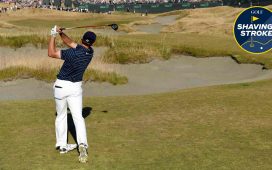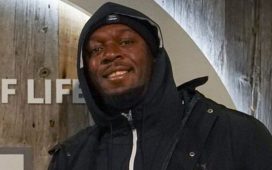BRIANÇON, France — To watch the cyclists of the Tour de France assault the high Alps, those grand geologic up-thrusts of granite and limestone, to see men pedal through misting meadows and up brutal switchbacks is to thrill at feats of athleticism.
As the Tour heads toward its finale in Paris on Sunday, there are so many complex strategies and stories: Will the ebullient young Julian Alaphilippe of Deceuninck Quick-Step — regain the yellow jersey to become the first Frenchman to claim the title of champion in three decades? Will he fall to the high-altitude guy from Colombia, Egan Bernal of Team Ineos (the New York Yankees of cycling), or the Dutchman Steven Kruijswijk of Jumbo-Visma?
As I watch, however, another question nags: Is all of this real?
Are these stars drawing on deep reserves within or are they helped along by a chemical new or old? When announcers exclaim that a rider pedals “like the Hulk” or describe Alaphilippe’s performance as “absolutely extraordinary,” it seems wise to temper the urge to clap unreservedly.
This sport was near consumed by doping. In the 1980s and 1990s and deep into this century, one champion after another fell away: Marco Pantani, Alberto Contador and Lance Armstrong, who was barred for life and stripped of seven Tour de France titles.
This much can be safely said: Cycling today is far cleaner than before. Testing has improved by great leaps and athletes have their blood tested out of season, as well. This is essential for any half-serious testing program. As fewer champions perform in ways that make them appear as a separate species, rival cyclists perhaps no longer feel it necessary to illegally pump EPO into their veins, which increases the capacity of the blood to carry oxygen.
That said, cycling certainly is not altogether clean. In March, the German police found a skier tethered to a blood bag and the investigation led two Austrian cyclists to confess to doping. They hailed from prominent teams competing in this year’s Tour de France.
“Are we catching every cyclist who dopes? No,” says Jonathan Vaughters, manager of the EF Education First cycling team, and author of “One-Way Ticket,” a forthcoming book that examines cycling’s dirty history and his own doping. “But we are leaps and bounds better than two decades ago.”
I placed a call to the South African Ross Tucker, an internationally renowned exercise physiologist and founder of the website The Science of Sport. He has tracked doping and performance and notes that in the wake of multiple scandals, cycling times declined. Of late, however, those times have edged back up.
Cycling has embraced the biological passport, which profiles athletes’ individual blood values, so there is a baseline that their tests can be compared with. That has dialed back but not stopped doping. A cyclist might still try to micro-dose — take small doses of drugs that are difficult to detect — right up to the line.
“The breadth in which you can safely dope has greatly narrowed and that has constrained use,” Tucker said. “What we don’t know are the unknown unknowns. Are there new drugs, new ways?”
Ominously to the view of antidoping scientists, neither of the Austrian cyclists caught in that police investigation had tested positive.
Marc Madiot, director of the team Goupama-FDJ, employed one of those cyclists and he made a fine show of indignation. “Trust was betrayed,” he proclaimed. “That’s one of the hazards in life.”
That’s true about life. It’s also true that Madiot raced in the bad old days of doping and was questioned intensively by the police and was nearly brought to ground in a big cycling doping scandal in 1999.
Now I need to back off a few steps. Cycling may be the original fallen angel of doping — competitive cyclists in the 1880s allegedly pedaled fueled by a stew of cocaine and caffeine — but it arguably has a notably tougher testing regimen than many American sports, including baseball.
And many in Major League Baseball’s establishment hailed from a no less dirty rotten steroid era. Tony La Russa, now a vice president with the Boston Red Sox, was inducted into the Hall of Fame in 2014 for his work as a manager. His teams, notably the Oakland Athletics, were great beneficiaries of baseball’s steroid age and he adamantly defended such obvious dopers as Mark McGwire.
Nor did the baseball press cover itself in glory. A house was on fire and too many reporters sounded like fan boys rather than run for a bucket of water.
Let’s return to cycling. The persistence of its doping problems owes to the fact that the sport is about power and endurance. As another fallen champion cyclist, Tyler Hamilton, noted in his own tell-all book, “The Secret Race,” racing at the highest level is about the ability to endure pain while producing energy across hours of effort and at high altitudes.
In all of that, he noted, blood doping was — and still can be — a great force multiplier.
Of late, the look of professional cyclists has changed and that has stirred concern. Where in the 1990s cyclists like Armstrong looked muscular and fierce, today cyclists look lean to the point of emaciation. Much speculation centers on an unapproved drug, AICAR, which helps an athlete lose weight without losing muscle mass.
Tucker equates the effect of that drug to car design. You can, he noted, make a bigger and more powerful engine, and that happened in the 1990s. Or you can keep the engine the same size and cut the mass of the car.
“AICAR offers a way to cut weight without impacting performance,” he noted.
There is finally a conundrum that confronts all who would keep doping out of professional sports: The distance between the cup of suspicion and the lip of drop-dead proof is great.
“In order to trigger a sanction, you have to have been 99.9 percent likely doped,” Tucker said. “Obviously many fall short. They are highly suspicious but not enough to sanction.”
So fish slip through the net and maybe we’re the better for that. Better to let 99 walk free than to jail one innocent. It does however feed that nagging suspicion that hangs over all sports in this era — the explanation for extraordinary accomplishment might prove more complicated than it appears.








